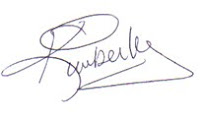
(There is the old adage, just because you own a hammer, it doesn’t make you a carpenter. This holds true with a camera. Anyone can take snapshots, very few can create the quality image that best shows off your projects.)
Locating Candidates
Referrals
Whether it be a competitor, supplier, or a subcontractor, we have all seen web sites with architectural photography on them. If you find a site with photograph(s) with a style that catches your eye, find out who their photographer was on the project. If possible, ask their experiences with the photographer.
Publications
Depending on your marketing reach or budget, look through local, regional, or national magazines. If photo credit wasn’t provided on an image, contact with the magazine itself, the architect, the designer, or the advertiser to find out the name of the photographer. This might take a little work, but if the photographer has a style you like, it will be worth it.
Online Resources
- ASMP – Find a Photographer
- AIAP – Association of Independent Architectural Photographers
- IAAP – International Association of Architectural Photographers
Selecting a Photographer
Just like yourself, the photographer is a creative professional. With such creativity, each individual’s vision and methodology is unique.
Online Portfolios
This is your first filter in the search for a photographer. A photographer’s web site is a showing of his/her best work.
Invite Submittals
OK, you’ve found a handful of photographers that have sparked your interest. Ask them to submit a presentation of images, either in a hard copy portfolio, or via an online presentation. You can request images of a certain kind of project, building, subject, etc. and, you can ask for multiple images from each individual project, so you can see a photography project in its entirety. Depending on your preference, you can have them come in and make a face-to-face presentation, send a hard copy portfolio to your office, or you can just ask them to email you a link to an online presentation of images. You can review these submittals collectively with various colleagues, with or without the photographer present.
Ask for an Estimate
To ensure you’re receiving the best Estimate possible, be sure include the following information:
- The number of images you envision
- The length of time you expect the shoot to take (remember, with their expertise, the photographer may have a different prospective on this)
- Specific shots you need, such as a dusk/dawn shot, or an image with early morning/late afternoon light coming in through windows
- Whether you prefer people in your images or not
- Your preference to a scouting visit or not
- How you plan on using the photographs (web site, advertising, promo materials, etc.)
- How quickly you need the images shot and final delivery
- How you want proofs and final images delivered
Once you have selected the photographer for a particular project, please let the other submitting photographers know the project has been awarded, and, if possible why they weren’t selected. This is to help us further understand your needs for future projects.
Keep a Database
Reap the benefits of your hard research work by maintaining a file/database of photographers your firm would be interested in working with. This information will prove to be an invaluable place to start should you require multiple Estimates on future projects, or your preferred photographer is unavailable. If possible, ask for quarterly-annual updates from photographers in this database. You can request images from current projects, clients, etc.
Whether you were there or not, and whether we are your photographer on a project or not, if you have any questions or comments about commissioning architectural photography, please feel free to drop us a line anytime. We'd be happy to help!

Kimberly Blom-Roemer
Photographer
R2 Photography, LLC
r2-photography.com





